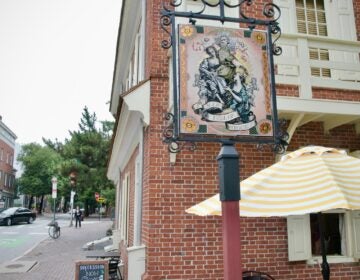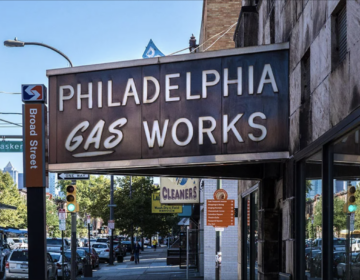How the new zoning code draft affects commercial properties along Ridge Avenue
In Northwest Philadelphia, zoning overlays govern what kind of sign you can hang above your Manayunk boutique, what your corner store can sell in Germantown, how wide your Chestnut Hill storefront can be, and where to put the trash bins for your restaurant in East Falls.
Traditionally, overlays have allowed individual neighborhoods to limit or encourage specific kinds of commercial development and create a desired aesthetic. They dictate how tall structures can be and how they should look, and guide the interaction between public and private spaces. In many cases, they also include lengthy and specific lists of prohibited business uses.
In the proposed city zoning code, the Northwest overlays are absorbed into a new category called Neighborhood Commercial Area, or NCA, “intended to preserve the integrity of neighborhood commercial areas and to promote and help guide appropriate commercial development.”
In general, the NCAs deal more broadly with the form and design of the built environment, rather than enumerating specific uses, said Matt Wysong, Northwest community planner for the city Planning Commission. In many — but not all — cases, those individual prohibited uses will be left to the control of the new commercial zoning that will replace current designations.
This week, we’ll look at the Ridge Avenue Special District Controls, the overlay for commercially-zoned properties between Hermitage Street and Monastery Avenue.
Before:
The ink on this overlay is hardly dry, as it was introduced by Councilman Curtis Jones Jr. only last December, and hardly tested in the months since. Its intent, however, is clear: to re-orient Roxborough’s original commercial corridor away from the vehicle — both literally and figuratively — and more to the pedestrian.
It calls this part of Ridge Avenue, along several major bus routes and within walking distance to others, “a viable candidate for residential development targeting those working in Center City, Manayunk and Conshohocken.” City-wide, Roxborough is gaining a reputation as one of the next great family-friendly neighborhoods — hardly news to the generations of parents who pushed strollers along the Ridge for shopping and errands.
The Ridge Avenue Controls seek a return to that.
“This overlay is really about getting active first-floor uses that contribute to the character of a mixed-use, Main Street-type area,” Wysong said. The Roxborough Development Corporation has an ongoing streetscape project along Ridge Avenue, and has created a master plan to work in concert with the overlay.
A walk along this stretch, especially between Hermitage Street and Leverington Avenue, reveals the stark difference between the type of development the overlay is meant to prevent and what it seeks to encourage. The controls bar future car sales showrooms, towing and repair shops, gas stations like the Sunoco/A-Plus at Leverington Avenue, and car washes — though a car wash is currently under construction near the CVS and WaWa at Cinnaminson Street, just outside the overlay area.
It also makes a clear effort at controlling the future of a key site, the empty car dealership at 6225 Ridge Ave., currently a large blank space on an otherwise busy stretch of the Ridge. It’s a perfect illustration of the kind of site design the overlay bars, with driveway access and parking on Ridge Avenue, the free-standing, internally-lit sign, the large panes of glass painted over with advertising.
The overlay applies to buildings fronting Ridge Avenue and zoned C2, and limits height to between 25 and 45 feet and no more than 8,000 square feet of leaseable space on the first floor, to keep the street scale in check. It also spends a lot of time discussing building facades and signage, with limits on certain styles and a requirement of at least 70-percent of the ground-floor windows made from clear glass, and windows at street level.
After:
As with other overlays, the NCA portion governing Ridge Avenue in Roxborough is a generally leaner version of its overlay cousin.
The change in zoning for the area comes into play, however. In going from C2 to CMX 2.5, as in the draft zoning, some of the use limitations and design standards disappear, Wysong said. Allowable height goes up to 55 feet, allowing for a fourth story, and guidelines for landscaping and screening of parking lots disappears, and is absorbed into other parts of the code, Wysong said.
The current overlay bars professional offices and “personal service” businesses (think nail salons and tanning studios) from the first floor. The new zoning guidelines, while still prohibiting the auto-related businesses, doesn’t bar these uses.
“In effect, now you can have those business and professional offices and personal services on the first floor,” Wysong said. Curb cuts for driveways are still prohibited along Ridge Avenue.
What the new overlay does carry over, however, is significant: Aside from commercial square footage limits and window height requirements, the Roxborough piece keeps many of the extensive signage guidelines and requirements.
The overlay reduces slightly the amount of clear glass required along the front, to 65 percent, but sets strict limits on business advertising. The overlay bars freestanding, flashing or digital-message signs, and limits projection to three feet from the building front. Other guidelines cover window displays and awning signs.
And just as there was a picture of how not to build to this overlay in the auto dealership site, a few blocks down Ridge Avenue is an opposite example. The RDC worked with the developer of the Ridge Commons retail plaza at Ridge and Lyceum, and it was built to a standard that fits with the current and future overlays: Parking in back, no building setback from Ridge Avenue, prominent front windows, and flat illuminated-word signage.
Next week: We’ll wrap up our series on Northwest overlays and NCAs with a look at the one that isn’t there — the Lower and Central Germantown Special District Controls.
—
Contact Amy Z. Quinn at azquinn@planphilly.com.
WHYY is your source for fact-based, in-depth journalism and information. As a nonprofit organization, we rely on financial support from readers like you. Please give today.






